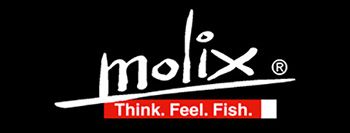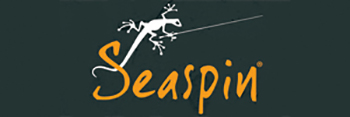dicembre 2016 - gennaio 2017
Sommario
ITINERARIO MOSCA E SPINNING
HUCHO HUCHO. IL SIGNORE DEL FREDDO
di Alessandro Galletti
La pesca dell’Hucho Hucho richiede grande determinazione: camminare per ore nel freddo, e spesso nella neve, può essere sfiancante e togliere la lucidità necessaria per lanciare sempre nel punto giusto. Ma ha un fascino magico.
TECNICA MOSCA
BOLLERANNO? LA PESCA A MOSCA IN ACQUE MOSSE
di Massimo Magliocco
Molti pescatori a mosca ritengono che in mancanza di bollate non si possa pescare a secca e relegano tale tecnica alle sole lame calme e tranquille, preferendo in tutte le altre situazioni la ninfa. Ma le cose non stanno così.
TECNICA SPINNING
ASPIUS TIME
di Renzo Della Valle
Con l’arrivo dell’inverno, i pescatori a spinning che non vogliono interrompere le loro uscite hanno un’alternativa alle trote dei laghetti e ai sempre più improbabili lucci e perca: l’aspio, predatore dinamico e divertente, da insidiare con attrezzatura leggera.
ITTIOLOGIA
LA RIPRODUZIONE DEI SALMONIDI
di Luca Ciuffardi
La riproduzione dei pesci si ripete ciclicamente in un periodo dell’anno preciso, variabile nelle diverse specie e influenzato dalle temperature e dalla variazione nelle ore di luce. È un momento delicato per i Salmonidi, tutelato da precisi periodi di divieto di pesca.
TECNICA SPINNING
ONDULANTI PER IL LAGHETTO
di Giorgio Montagna
Nei laghi privati di dimensioni più grandi di quelli ove si pratica l’Area Trout l’ondulante è spesso snobbato, a favore del minnow. Se ben gestito, invece, è un artificiale ideale in questi ambienti per raggiungere le trote lontane dalla riva, raggruppate al largo e spesso svogliate.
COSTRUZIONE MOSCA
THE MARY DETTE
di Niklas Dahlin
Erede di una delle più importanti famiglie di costruttori delle Catskill Mountains, Mary Dette è la ‘destinataria’ dell’omonima mosca realizzata dall’autore, che ha voluto con essa al tempo stesso omaggiarla e condensare tutto ciò che ritiene fondamentale nello stile Catskill.
TECNICA SPINNING MARE
DIO SALVI LA REGINA
di Francesco Paolini e Leonardo Muto
Al di là di facili generalizzazioni, il modo di pianificare una battuta alla spigola cambia molto in base alla regione, alla conformazione della costa e alle condizioni meteo. Viene qui proposto un raffronto tra due zone di pesca diverse: alto Tirreno e coste calabresi.
ITINERARIO MOSCA
CANADA: SALMONI A SECCA
di Armando Quazzo
In Canada – e nello specifico nei fiumi di Terranova e Labrador – la tradizione alieutica vuole da sempre i salmoni catturati con esche galleggianti. L’autore propone una breve intervista a una nota guida locale e indica tempi, modi e costi di un viaggio dedicato.
TECNICA SPINNING
LIPLESS PER IL BASS
di Luca Dal Cer
Non sono molti i pescatori che utilizzano il lipless per la ricerca del bass, preferendogli il più classico crank. Luca ricorda l’utilità dell’impiego tradizionale, mostra alcuni validi modelli e propone una variante che sta riscuotendo successo negli ultimi tornei americani.
ITINERARIO MOSCA E SPINNING
C’ERA UN VOLTA IL TIRINO
di Roberto Trolla
Il tratto di Tirino che scorre nell’abitato di Capestrano è stato molto celebrato ma negli ultimi anni è rimasto spesso chiuso o ha avuto stagioni di pesca particolarmente ridotte. L’articolo vuole rappresentare un auspicio e uno stimolo alla sua rivalutazione.
ITINERARIO SPINNING MARE
COLOMBIA
di Alessandro Massari
Scoperta recente dell’autore, la Colombia, non più pericolosa come un tempo, ospita nelle sue acque molte prede divertenti, a cominciare soprattutto dalle cubere, insieme a jack crevalle e snapper, ma anche tarpon atlantici nel sottoriva e belle ricciole a jigging.
COSTRUZIONE MOSCA
ZAMPETTO DI LEPRE ARTICA
di Fabio Federighi
Il pelo che si trova sotto il piede degli zampetti posteriori delle lepri artiche ha elevata idrorepellenza e notevole resistenza, caratteristiche che si rivelano assai utili ai fini della costruzione. Si spiega qui come trattarlo per ottimizzarne l’impiego e come utilizzarlo.
AUTOCOSTRUZIONE
JIG DA LUCCIO
di Moreno Bartoli
Moreno mostra come utilizzare l’idea base della stampa 3D – la ‘stratificazione’ – per realizzare dei jig in piombo senza troppi rischi. Infinite sono poi i modi per dressare l’esca con trailer siliconici, gonnellini e piumaggi vari, come ben si vede nelle varie proposte dei lettori.
























